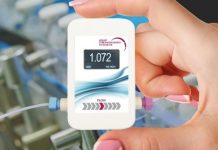Do you have a plan in place to ensure that all of your substances are registered before the 2018 deadline?
Since the pre-registration phase of REACH ended in 2008 we have seen two registration deadlines in 2010 and 2013. Companies who registered substances that they manufacture or import before one of these deadlines have a good understanding of the registration process and in most cases will have a plan already in place to register any remaining substances before the final deadline in May 2018.
There are other companies who do not manufacture or import any substances in a quantity of more than 100 tonnes per year. Some of these companies may have hardly used their REACH-IT accounts in the last six years other than to submit an occasional late pre-registration or their CLP notifications. This article is concerned with these companies. Now is an excellent time to prepare a plan to ensure that all substances are registered before the deadline. Here are a few questions to consider.
1. Which of your substances have already been registered by other companies?
For these substances do you have contact details for the lead registrant and do you know the cost of a letter of access to the joint registration?
Are you sure that the substance you are placing on the market meets the substance identification profile of the substance which has been registered – it is not enough to say that the CAS number is the same?
Do you have the analytical data that you will need to include in the registration dossier? If not, how are you planning to obtain this data?
2. Which of your substances have not yet been registered by other companies?
For these substances has any company proposed themselves as the lead registrant? If not, are you going to:
Do nothing and hope that a lead registrant emerges in time for you to participate in a joint registration.
Initiate contact with the other pre-registrants to find out who is planning to register the substance, and perhaps volunteer to act as lead registrant for some substances.
Reformulate your products so that unregistered substances can be eliminated from your portfolio before the final registration deadline.
3. How are you going to prepare your registration dossiers?
Do you have the resource to prepare multiple dossiers in IUCLID 5.6 or will you need external support?
If your registrations are in the 10-100 tonne per year band are you ready to meet the requirement for extended safety data sheets?
Is there a value in starting the registration process this year rather than waiting until 2017/18?
There are many companies who would be able to help you with this gap analysis and have experience of the registration process gathered over the last six years. As one of these companies, we have registered substances on behalf of our non-EU clients, acting as an only representative. We have also prepared dossiers for EU companies. We encourage our clients to have a plan in place to ensure that all required registrations are in place with plenty of time to spare before the final registration deadline. We would advise all companies with 2018 registration deadlines to do the same.













